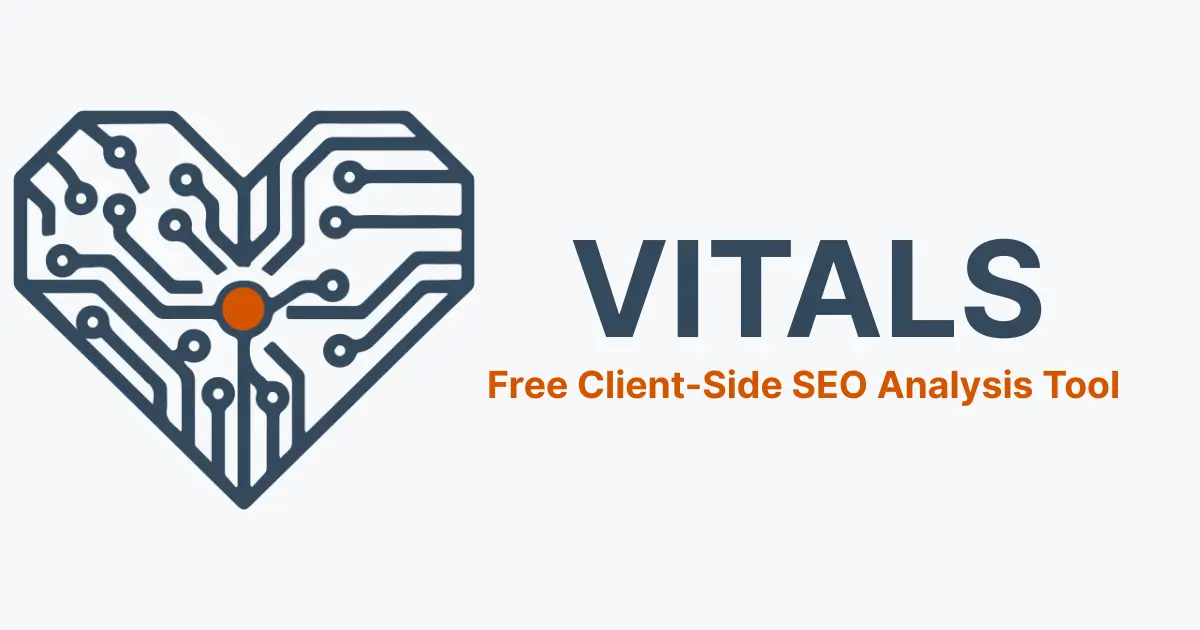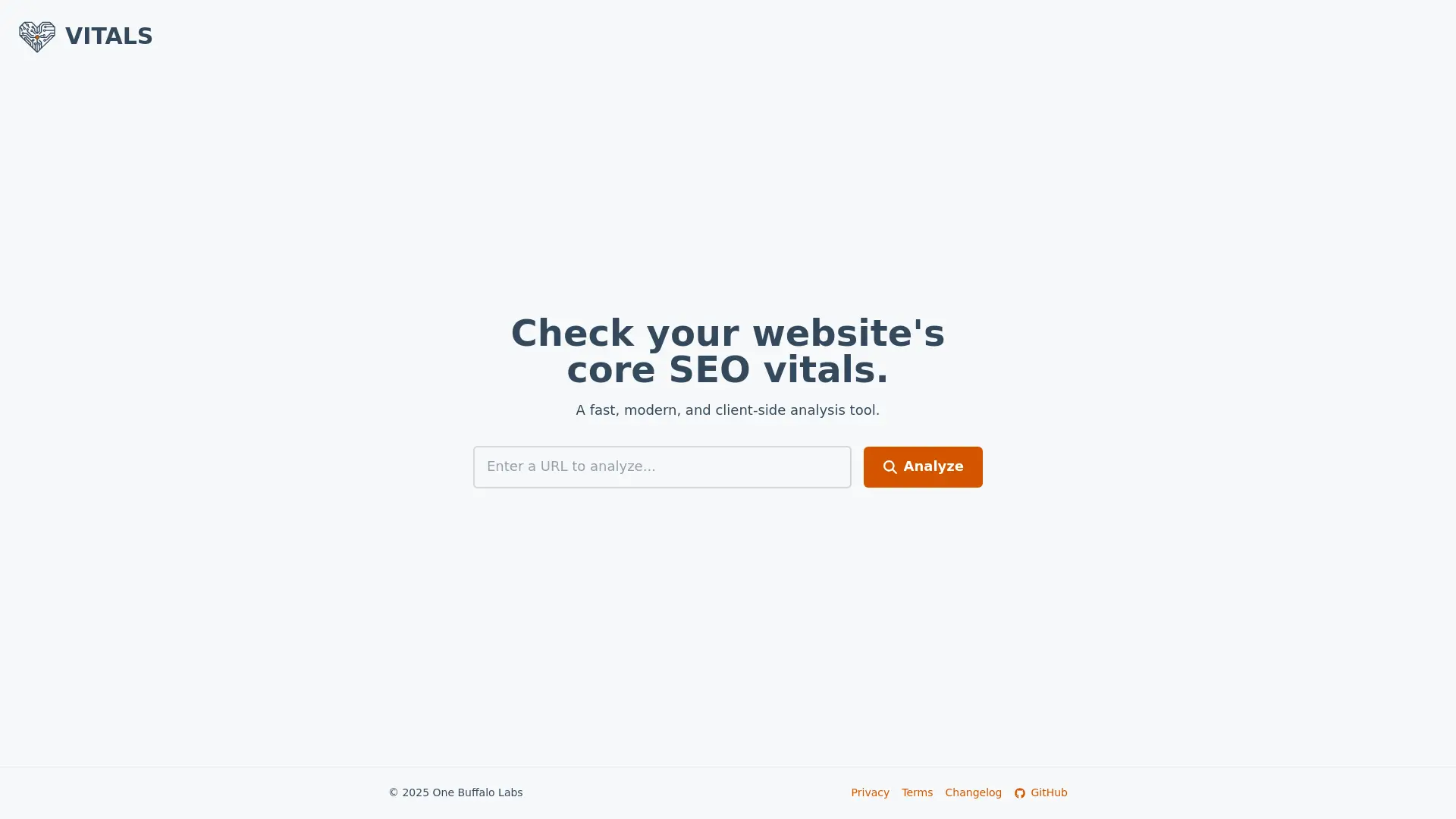Vitals: A Deep Dive Into Our New Client-Side SEO Tool 🚀
Published on August 18, 2025 by Andrew Elbaneh

Hey tech community! We're excited to officially introduce you to Vitals, a new SEO analysis tool from One Buffalo Labs. We've been hard at work building a tool that's not only powerful but also respects your privacy. In a world where data is everything, we decided to take a different approach: what if you could get a comprehensive SEO audit without sending your data to a server?
That's the core idea behind Vitals. It's a fast, modern, and client-side analysis tool built with Next.js and TypeScript that runs entirely in your browser.
Why Client-Side? 🤔
The "client-side" aspect is what makes Vitals special. It means that when you enter a URL, the analysis happens right there on your machine. We don't collect, store, or track the URLs you analyze, and we don't save the results. This approach offers two huge benefits:
- Privacy: Your data is yours and yours alone.
- Speed: By cutting out the back-and-forth with a server, the analysis is incredibly fast.
The Challenge of Cross-Origin Data
One of the hurdles for a purely client-side tool is the browser's security model, specifically CORS (Cross-Origin Resource Sharing), which prevents a website from fetching data from another domain directly.
To solve this, Vitals uses reliable, third-party CORS proxies to retrieve website content for analysis. While this works well most of the time, the analysis can occasionally fail if a target server blocks these proxies or if the proxy services are temporarily unavailable. We're continuously working to make this process more robust and reliable.
Core Features: What's Under the Hood? 🛠️
We've packed Vitals with features to give you a comprehensive look at your website's SEO health. Here's a breakdown of what you can expect.
On-Page SEO Basics
We cover the fundamentals, including:
- Title Tags, Meta Descriptions, and H1s: We analyze these for content and length, giving you clear recommendations based on SEO best practices.
- Header Hierarchy: Get a full breakdown of your
H1-H6tags to ensure your content is structured correctly. - Image SEO: Vitals scans every image and checks for
alttext, a crucial component for accessibility and SEO.
Technical SEO
We also dig into the more technical aspects of your site:
- File Access: We check for
robots.txtandsitemap.xmlto make sure search engines can crawl your site effectively. - Canonical Tags: We verify your
rel="canonical"tags to help you avoid duplicate content issues. - HTTP Headers: We inspect your response headers for security best practices like
Content-Security-PolicyandStrict-Transport-Security, as well as content encoding.
Branding and Identity
Your brand's presentation is key, so we've included:
- Favicon Analysis: We run detailed checks for all modern favicon formats, including
SVG,PNG, andICO. - Web App Manifest: Vitals parses your
manifest.jsonfile to ensure your Progressive Web App (PWA) is configured correctly with a name, short name, theme color, background color, and the required icon sizes. - Social Sharing: We check for Open Graph and Twitter Card meta tags to make sure your content looks great when it's shared on social media.

What's Next? The Future of Vitals 🔮
We're just getting started! We're already planning our next set of features, with the big one on the horizon being Core Web Vitals integration. Soon, you'll be able to get real-world performance data (LCP, INP, and CLS) right inside Vitals.
Our Tech Stack 🤓
For those who love the nitty-gritty, Vitals is built with:
- Framework: Next.js 15 (App Router)
- Language: TypeScript
- Styling: Tailwind CSS
- Parsing: Cheerio
Ready to Check Your Vitals?
We built this tool for the community and we're excited for you to take it for a spin.
- 🚀 Try Vitals Now — Get your free SEO analysis in seconds.
- ⭐ View on GitHub — Vitals is open-source! We welcome contributions and feedback.
